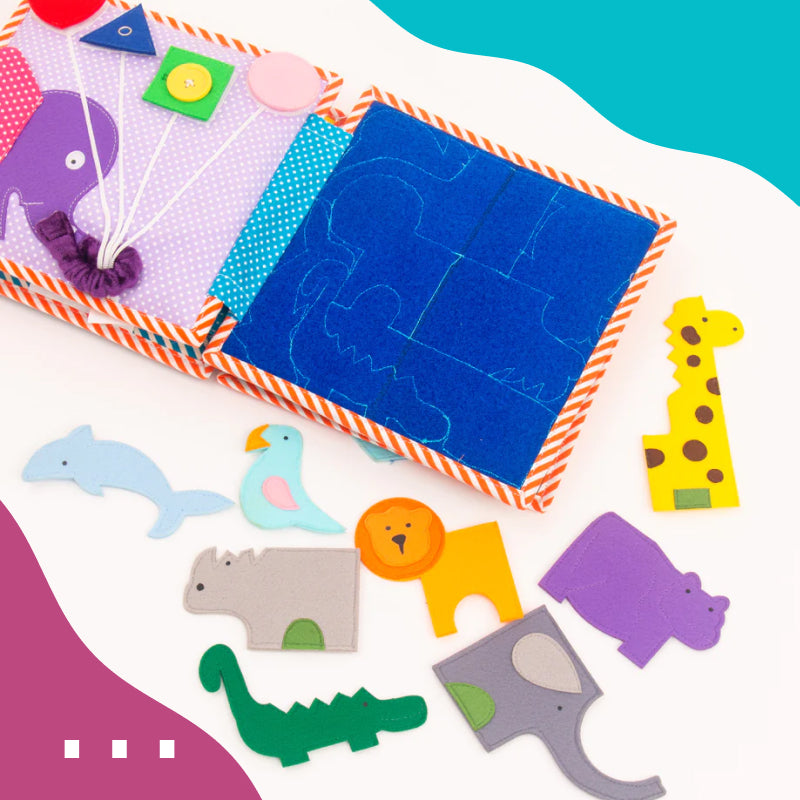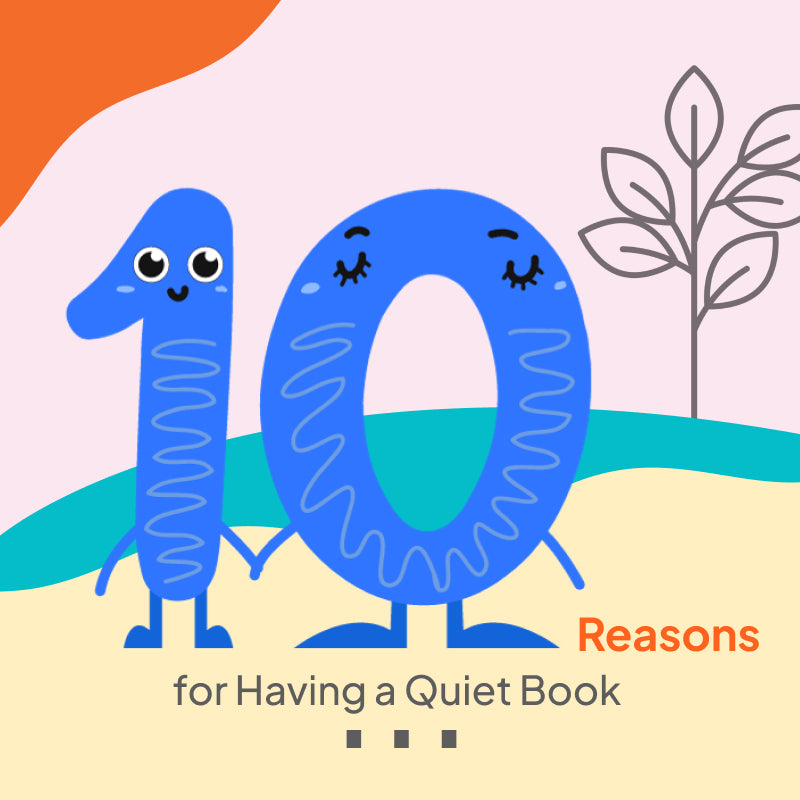On the Internet you will find a whole range of free instructions and great patterns to help you make your own Quiet Book. Decide in advance what you want to make, which pattern or tutorial you want to use and have all the materials ready before you start.
For making your own Quiet Book, we've put together a little checklist for you here.
You will need:
- different coloured cotton fabrics
- Ironing fleece in different thicknesses
- polyester batting/ polyester fleece
- Felt plates in different colours
- Sewing thread
- fabric scissors and a small pair of needlework scissors
- self-erasing or water-soluble fabric marker (for example the Trickmarker from Prym)
- transparent paper or baking paper
- pencil and ballpoint pen
- ruler
- patchwork or quilting ruler to mark right angles
- fabric clips, pins, sewing needles
- Iron
- Cutter knife
- rotary cutter
- Cutting mat
- compass
- and a sewing machine
Depending on your idea, activity, or pattern, you may need other materials. Don't start until you have everything on hand. Do you need cords, buttons, ribbons or zippers? See below for some sources of materials.
More tips on choosing fabrics, felt sheets, and other materials you'll need to make your Quiet Book:
Cotton Fabrics
Be sure to choose fabrics for your Quiet Book that are free of harmful substances. The most common certifications for fabrics are the OEKO-TEX Standard 100 and the GOTS standard. Feel free to ask at the fabric store - many manufacturers offer these safety certifications so you can be sure your child is protected from harmful chemicals.
For the individual pages, we recommend pure poplin, a very tightly woven fabric made from 100% cotton. If you are making a Quiet Book with six activity pages, you will need fabric for each page, for the covers, and for the inside and outside pages. If you choose a different color or pattern for each activity page, another fabric for the cover, and another for the two inside pages, you will need a total of eight different fabrics.
It's cheaper to use just one cotton for all six pages and another for the book cover with the two inside pages, or just buy a fat quarter bundle with different cottons.
For the activity pages, softer, lighter shades are a good idea, either plain fabric or something with a minimalist design. This way, the child's focus is more on the activity and they won't be distracted by a bumpy background. For covers, in our experience, it's best to use designs with themes that your child finds exciting. This could be fabric with animals, vehicles, a star or a clown. Perhaps you could personalise the Quiet Book with a little name embroidery or a photo pocket for the child to put their picture in?
Felt
For the applications on the activity pages, 1 mm thick polyester felt sheets are suitable. To make your Quiet Book visually appealing, you will need about ten different shades.
Our felt is OEKO-TEX certified because it is durable and hypoallergenic. When you buy felt, always ask for a certificate so that your child is not exposed to potentially harmful chemicals when playing, as there can be big differences in the quality of polyester felt sheets. You can also test the physical properties yourself by pressing the rough side of a Velcro strip firmly onto the felt several times. Does the Velcro stick to the felt? Then the felt is not of good quality and will quickly pill and fluff.
Interlinings and iron-on fleece
To ensure that the Quiet Book is strong and sturdy enough to withstand curious fingers and persistent play, we use up to three types of inserts and iron-on fleece.
For the pages themselves you will need non-elastic, woven cotton iron-on fleece, for example G700 and G710. The weight should be 80-100 g/m². For a Quiet Book with six activity pages you need eight pieces of 21×21 cm each.
To give the pages even more grip and volume, you need one piece of 19×19 cm fixation fleece as an interleaf.
In addition, we use very strong, woven cotton fleece to iron on. Even if you only need smaller pieces, this fleece is important to stabilize individual details that are meant to be pulled, or for all parts that are taken off and reattached by the child during play. This cotton fleece is about twice as strong as soft iron-on fleece and feels stiff.
Other materialsthat you need
Your choices will depend mostly on what kind of activity pages you want to create. Much of this list is probably already in your home:
- Cords
- Shoelaces
- Zippers
- Ribbons
- Snap fasteners to sew on
- mini clothes pegs
- clear vinyl foil
- buttons
- beads
- clips
- Carabiner
- Velcro tape/ Velcro fastener
For sensory activities you will need fabrics with different textures, for example:
- Glitter felt
- oilcloth
- flannel
- imitation leather
- Velour
- Pompons
- Faux fur
- Sequin fabric
The choice of material can be time-consuming. But you'll find most of the supplies you need in a good fabric and craft store. If you don't have the opportunity to browse and shop locally, you're sure to find what you're looking for here:
Ms. Tulip https://www.frautulpe.de
Sevenblue https://www.siebenblau.de/bio-stoffladen-berlin
fabrics.com https://www.stoffe.de
In the next blog post we will explain how you can make your own Quiet Book in 10 easy steps.



Leave a comment
All comments are moderated before being published.
This site is protected by hCaptcha and the hCaptcha Privacy Policy and Terms of Service apply.